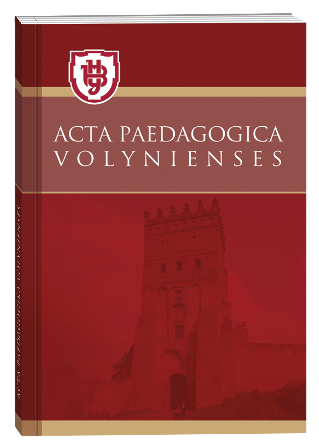FEATURES OF ADAPTATION OF EARLY AGE CHILDREN TO THE CONDITIONS OF A PRESCHOOL EDUCATION INSTITUTION
DOI:
https://doi.org/10.32782/apv/2025.1.10Keywords:
adaptation, early preschool age, preschool educational institution, child, educatorAbstract
The article examines the features of adaptation of young children to the conditions of a preschool educational institution. It has been established that the process of adaptation of a child to a stay in a preschool educational institution is influenced by three main components: 1. the socio-psychological level of adaptation, which includes: communicative communication with peers and adults; level of anxiety; family influence; degree of hardening of the child; already formed self-service skills; personal characteristics of the baby. 2. Psychophysiological level of adaptation. It is characterized by: the peculiarity of psychomotor development of young children. 3. Competence and professionalism of teachers. It has been found that in the process of physiological adaptation, two stages are distinguished: 1st stage – indicative-adaptive, when in response to the whole complex of new influences associated with the beginning of systematic training, there is a rapid reaction and significant tension in almost all body systems. Stage 2 – unstable, incomplete adaptation, when the body actively seeks optimal options for a stable state that will meet new conditions (the body spends everything it has and does not save resources). It has been established that the main tasks during the adaptation period for a preschool educational institution are: to create an emotionally favorable atmosphere in the group; to form a positive attitude towards kindergarten in children; to form a sense of confidence in the environment in children; to introduce children to each other and help them get closer; to introduce children to some kindergarten specialists. It has been substantiated that the joint activities of adults and younger preschool children are divided into a number of stages: establishing emotional contact with children. This is easiest to do with the help of game situations; involving children in organizing a play area.Children begin to navigate the space of their group, learn the names and location of objects and tools; the diversity of joint activities of the educator and children.
References
Бурсова С. С. Діагностика рівнів адаптації дітей до дошкільного навчального закладу. Педагогічні науки: теорія, історія, інноваційні технології, Т. 10 (54), 2015. С. 263–270.
Гурковська Т. Проблеми раннього віку. Дошкільне виховання. 2001. № 12. С. 15–16.
Захарова Н. М. Адаптація дітей дошкільного віку до сучасного соціального простору : монографія. Донецьк : вид-во «Ноулідж», 2010. 216 с.
Маценко Ж. Незабаром у дитячий садок: особливості психологопедагогічного підходу до дітей, що вступають до дошкільного закладу. Психолог. 2003. № 17. С. 2–10.
Мушинський В. Особливості адаптації дітей до умов дитячого закладу. Психолог. 2004. № 25–26. С. 3–12.
Соловей Ю. О. Соціальна адаптація дітей дошкільного віку в умовах закладу дошкільної освіти. Науковий вісник Ужгородського національного університету. Серія : Педагогіка. Соціальна робота / гол. ред. О. Бартош. Ужгород : Говерла, 2022. Вип. 1 (50). С. 260–263.
Циганенко О. М. Адаптація дошкільників до умов дошкільного навчального закладу. Особливості організації роботи практичних психологів у дошкільних підрозділах навчально-виховних комплексів району. Полтава, 2011. No 7. С. 6–10.
Шинкаренко В. В., Клімова Л. В., Міхіна Н. О., Купрієнко В. І. Особливості патріотичного виховання дітей дошкільного віку. Науковий часопис Національного педагогічного університету імені М. П. Драгоманова. Серія 5 : Педагогічні науки : реалії та перспективи : зб. наук. праць / Міністерство освіти і науки України, Національний педагогічний університет імені М. П. Драгоманова. Київ : Видавничий дім «Гельветика», 2020. Вип. 78. С. 244–248. DOI https://doi.org/10.31392/NPU-nc.series5.2020.78.51







